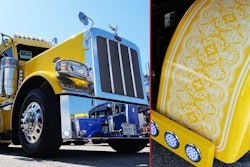Meal costs worth more this year
Good record keeping of expenses doesn’t include that most common of receipts, your on-the-road meals, because the per diem rate requires no documentation other than log books. For 2006, the rate jumps to $52 a day, and the percentage to claim increases to 75 percent, meaning a $39 per day deduction. The claim allowance goes to 80percent in 2008
Most of the tax breaks available to an owner-operator involve deducting expenses. The typical strategy is to squeeze in before Dec. 31 any whoppers you can: perhaps new tires, a laptopor an in-cab heater. You get part of your money back when you file in the spring.
Then there are the more tedious expenditures, things that might seem to be more trouble than they’re worth to keep up with. But as with fuel efficiency measures, little steps can add up to something big over time.
Since there’s no better time to start tax-saving practices than at the beginning of the year, consider these record-keeping tips for a New Year’s resolution:
USE OF A PERSONAL VEHICLE. Use a notebook to log any business-related trips: to the bank, to your truck dealer or to a store for supplies. The Internal Revenue Service mileage rate for such runs was 40.5 cents through Aug. 31; then it jumped to 48.5 cents through Dec. 31 after the fuel price hikes, says Indianapolis tax preparer Gary Aitken. It drops to 44.5 cents for 2006.
CONTRACT LABOR. For owner-operators, this usually means lumpers. “Especially guys hauling household goods,” Aitken says. “They get a little lax sometimes in getting receipts for contract labor.” He provides his clients with receipt forms for that purpose.
WORK CLOTHING. Whenever a uniform is required, its cleaning is deductible. Other apparel or accessories that are clearly work-related, such as steel-toed boots or heavy-duty gloves, also can be claimed. “If a guy’s wearing jeans and T-shirts, his normal attire, certainly that’s not deductible,” Aitken says.
CREDIT CARD CHARGES. It’s easy to overlook small business expenses if you use the same credit card for business and personal expenditures. This is one reason why it’s good to have separate cards for business and personal uses. Some of the most commonly missed yet sizeable deductible expenses that wind up on credit cards, Aitken says, are subscriptions to automatic billing services for toll roads or scales.
The bottom line: “Any time you spend money for any item, it’s important to get a receipt,” Aitken says. “If you’re not knowledgeable about whether it’s deductible or not, get the receipt anyway and let your tax professional make a determination.”
WHAT’S IT WORTH?
In this example, keeping records of business expenses saves $493 in income tax for someone in the 15 percent tax bracket, or more if a state income tax applies.
EXPENSES
Personal vehicle use $200
Contract labor $700
Work clothing $300
Credit card charges $500
TOTAL $1,700
TAX SAVINGS
Self-employment tax*
(14% of $1,700) $238
Income tax
(15% of $1,700) $255
TOTAL $493








